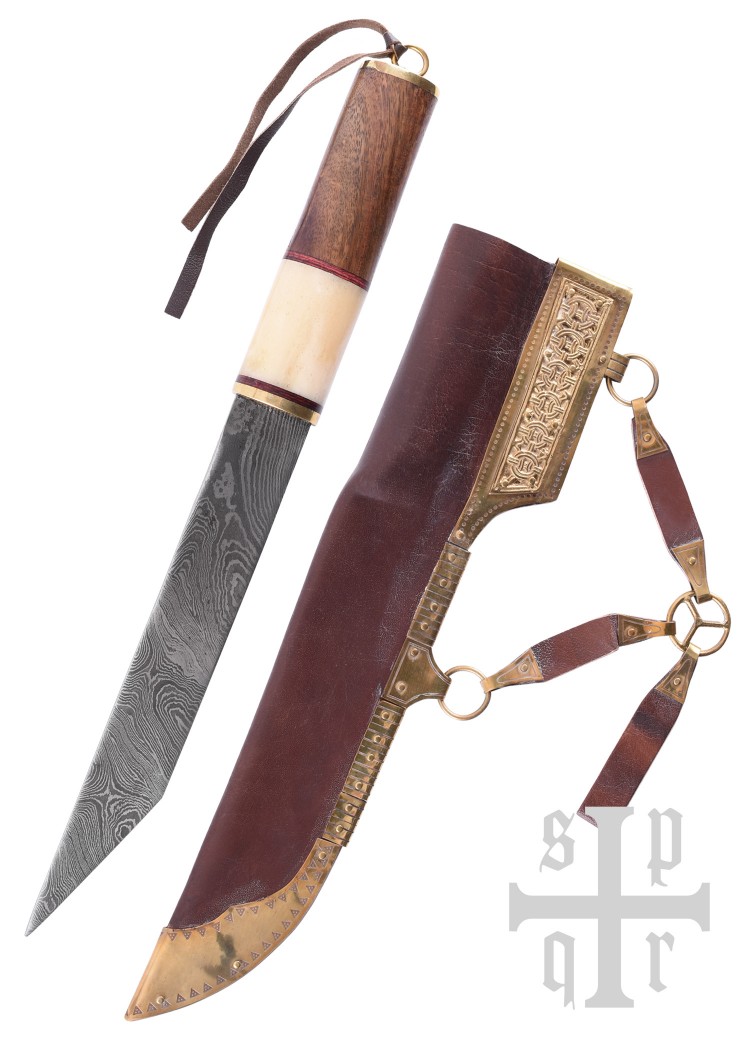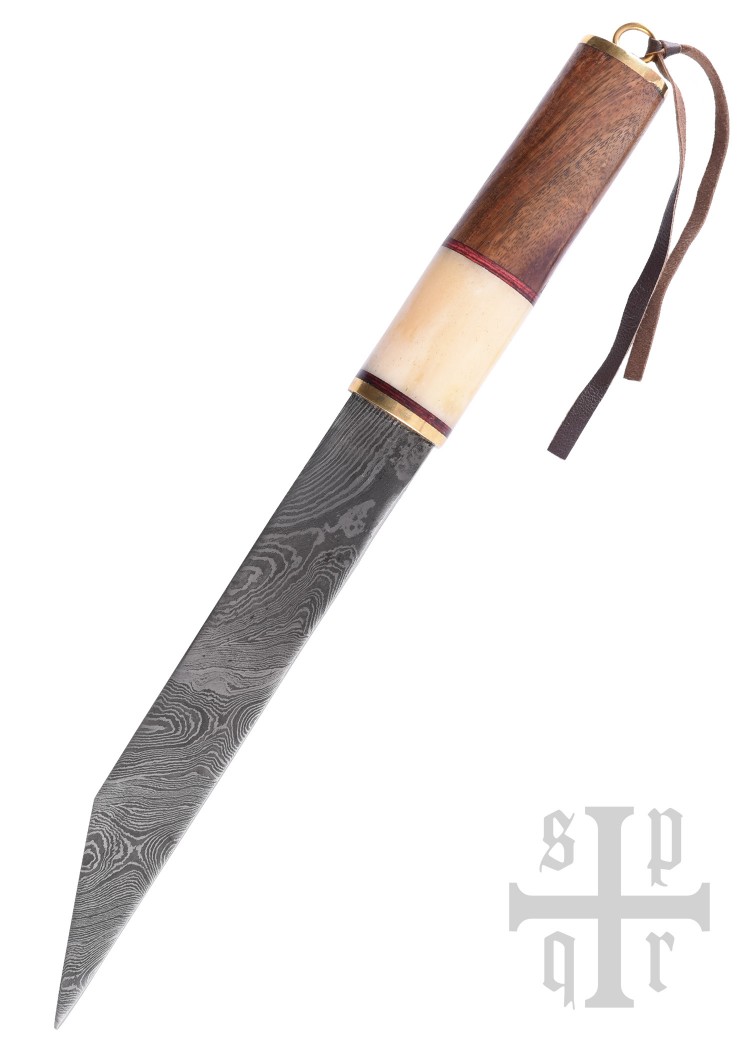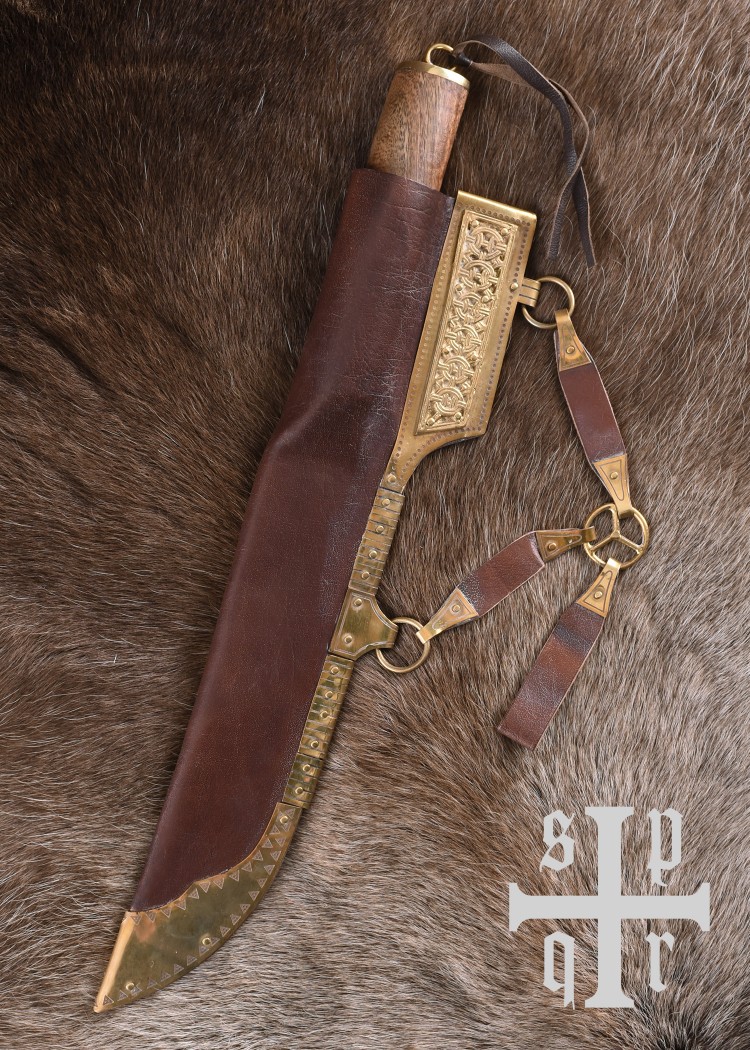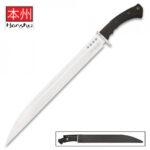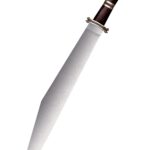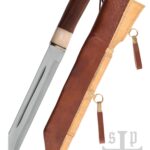Beskrivning
Broken Back Seax, Viking Knife with Damascus Steel Blade and Wood-and-Bone Handle
This hand-made Viking Age sax knife, known as a broken back seax owing to its particular blade shape, features a sharpened 256-layer Damascus steel blade and a wood-and-bone handle with brass collar and butt cap. The butt cap is equipped with a convenient eyelet for threading a lanyard or drawing the knife from its sheath (a leather lanyard is included in delivery). Please keep in mind that bone and wood are natural products and variations in colour and grain are quite normal. Each Viking seax has thus its own very unique handle and above pictures are for reference only.
The short seax comes with a beautiful vegetable tanned, hand-dyed leather sheath with ornate brass fittings. The suspension system consists of two carrying rings, a strap divider and three leather straps. Such split strap suspension systems were quite widespread in the Viking Age. The strap divider was designed to allow for an optimal positioning of each individual strap, so that the sword or the seax could hang from the belt at the perfect angle to be drawn from its sheath quickly.
Please note that, as the blade is sharp and fully functional, this scramasax is designed as a collector’s or decoration piece and not suited for combat reenactment!
The terms Damascus steel, damascene or pattern welded designate a compound steel forged out of two or more different types of steel. It is named after its birthplace, the Syrian city of Damascus, a former stronghold of the patterned steel production. As a common practice, a harder high carbon steel and a milder low carbon steel are repeatedly forge welded and folded together. The high carbon steel ensures a higher hardness, a better temperability and longer lasting edge retention, whereas the milder steel confers greater blade flexibility and tensile strength. This procedure, which arose in a time where steel qualities were often low and inconsistent, enables to combine the positive attributes of the various steel grades. Besides, the different shadings generated by the varying carbon content of the alternating layers engender strikingly beautiful patterns, such as the twisted motif called Torsion Damascus pattern or the Rose Damascus pattern. Undoubtedly, these unusual patterns partly explain why inherent magical properties were attributed to the Damascus steel blades of the Middle Ages.
Details:
– Blade material: Damascus steel (4340 and 1070 steel, 256 layers), sharp edge
– Overall length: approx. 33 cm
– Blade length: approx. 20 cm
– Weight: approx. 220 g (approx. 400 g with sheath)
– Leather-and-brass sheath with hanger

